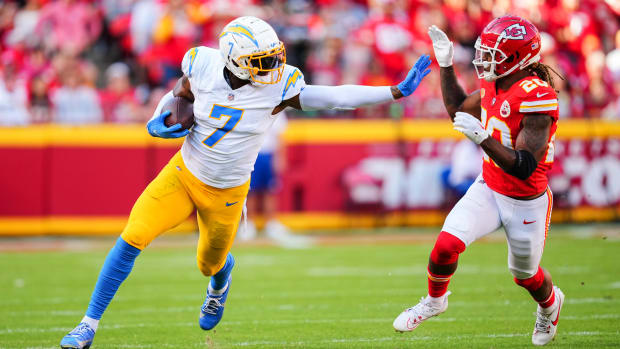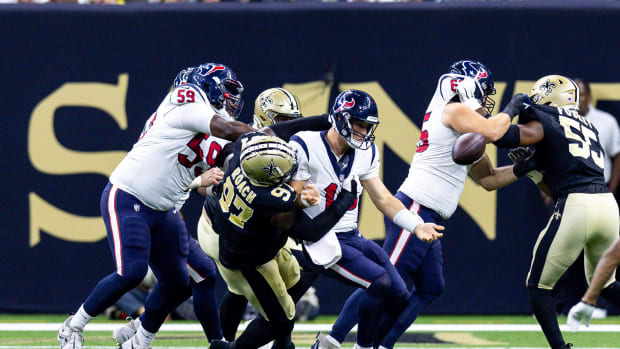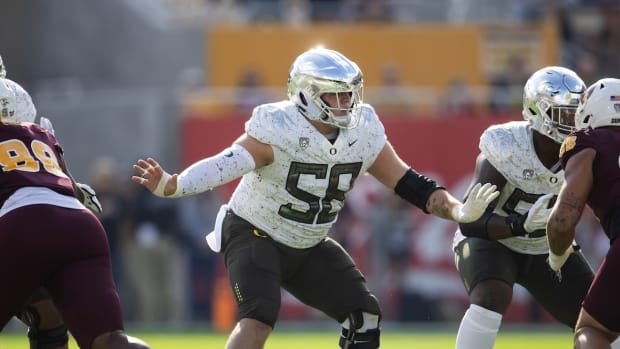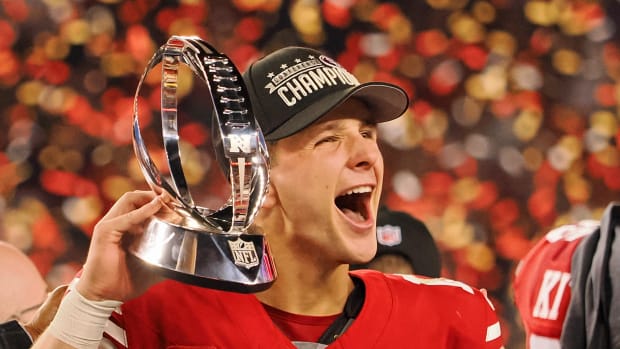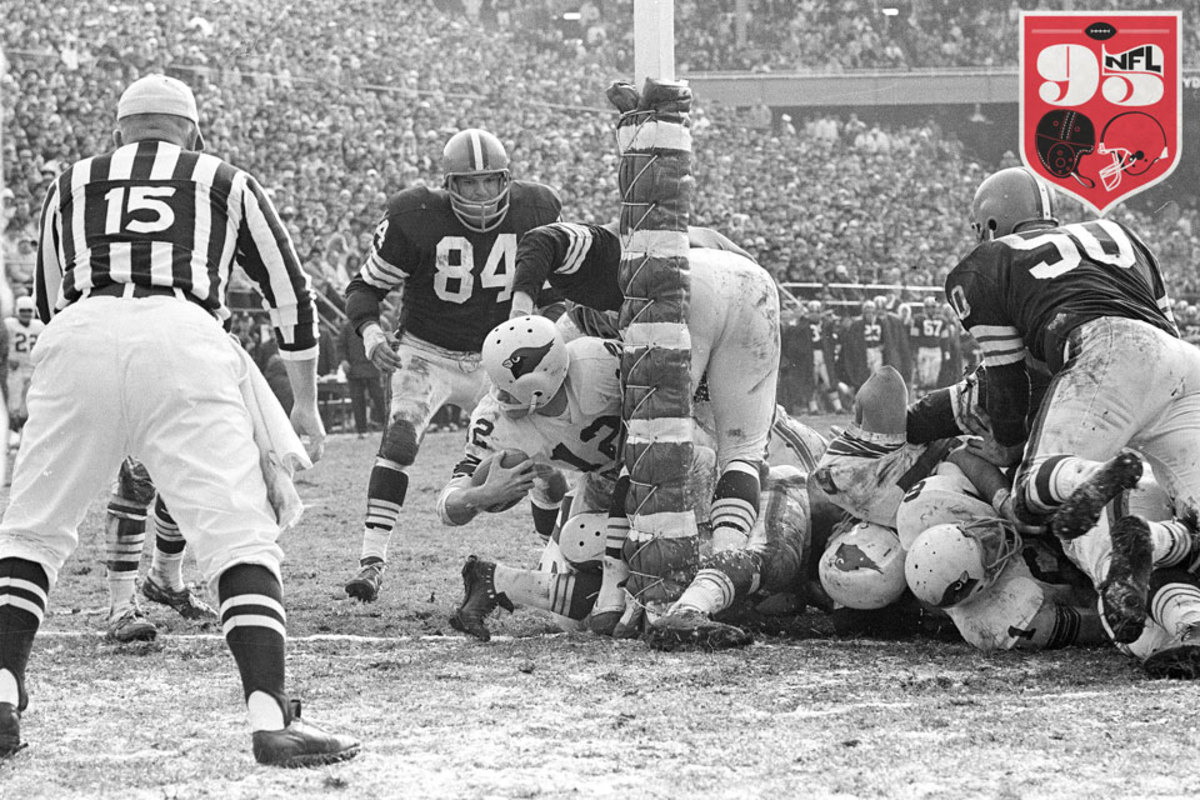
Goalpost on the Goal Line
The MMQB presents NFL 95, a special project running through mid-July detailing 95 artifacts that tell the story of the NFL, as the league prepares to enter its 95th season. See the entire series here.
One might assume the NFL moved the goalposts from the goal line to the back of the end zone in 1974 out of safety concerns. After all, how could you ever justify linebackers and running backs dodging a pole during a goal-line situation, receivers streaking down the hashmarks with an immovable object in their path, or QBs sneaking directly into a stiff wooden upright on a one-yard dive, like the Cardinals’ Charley Johnson pictured above in 1964?
In reality, league officials looked at the box scores and heard the uproar from complaining fans about conservative offenses that were confident enough in the new wave of soccer-style kickers led by Pete Gogolak to settle for a long-range field goal. The game was becoming a bore—which, ironically, was the reason the goal posts were on the goal line in the first place.
NCAA rules (which the NFL copied) moved the goalposts to the rear of the end zone in 1927, but fans then complained of too many ties, so the uprights were advanced back to the line in ’33. Forty-one years later, the goal post pushback put only a brief halt to kicking proficiency. After many seasons of near-perfect short-range kicking, the NFL is now considering a possible amendment to the extra point rule to make it more challenging.
— Robert Klemko
The Giants’ Pete Gogolak with a chip shot at the close-in goalpost against the Rams in the L.A. Coliseum in 1968. (Neil Leifer/Sports Illustrated)


































